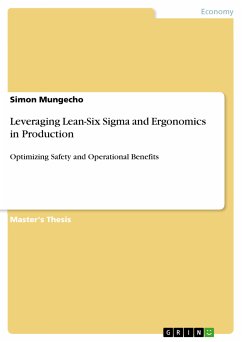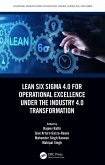Master's Thesis from the year 2009 in the subject Business economics - Industrial Management, Wichita State University (Engineering), course: Industrial Engineering, language: English, abstract: This paper argues that implementing Lean-Six Sigma and ergonomics concurrently presents great opportunities for manufacturing companies. It focuses on how these companies could profit from addressing ergonomics- related injuries by leveraging Lean-Six Sigma with their ergonomics / safety programs. The paper also looks at how such a strategy could transform an organization, lower workers compensation claims' costs, increase productivity, safety, efficiency, and improve the bottom-line. It is fundamental and critical for manufacturing companies with limited resources today, to harness the mutual benefits of investing on health and safety issues using methodology such as Lean-Six Sigma. The research concluded that manufacturing businesses that leveraged Lean-Six Sigma and ergonomics made significant improvements. There is no doubt from the study that work-related injuries are very expensive and can negatively affect an organization's competitive advantage. They can also affect the quality of work and the workers. The paper concludes by outlining some successive models and recommendations.
Dieser Download kann aus rechtlichen Gründen nur mit Rechnungsadresse in A, B, BG, CY, CZ, D, DK, EW, E, FIN, F, GR, HR, H, IRL, I, LT, L, LR, M, NL, PL, P, R, S, SLO, SK ausgeliefert werden.









